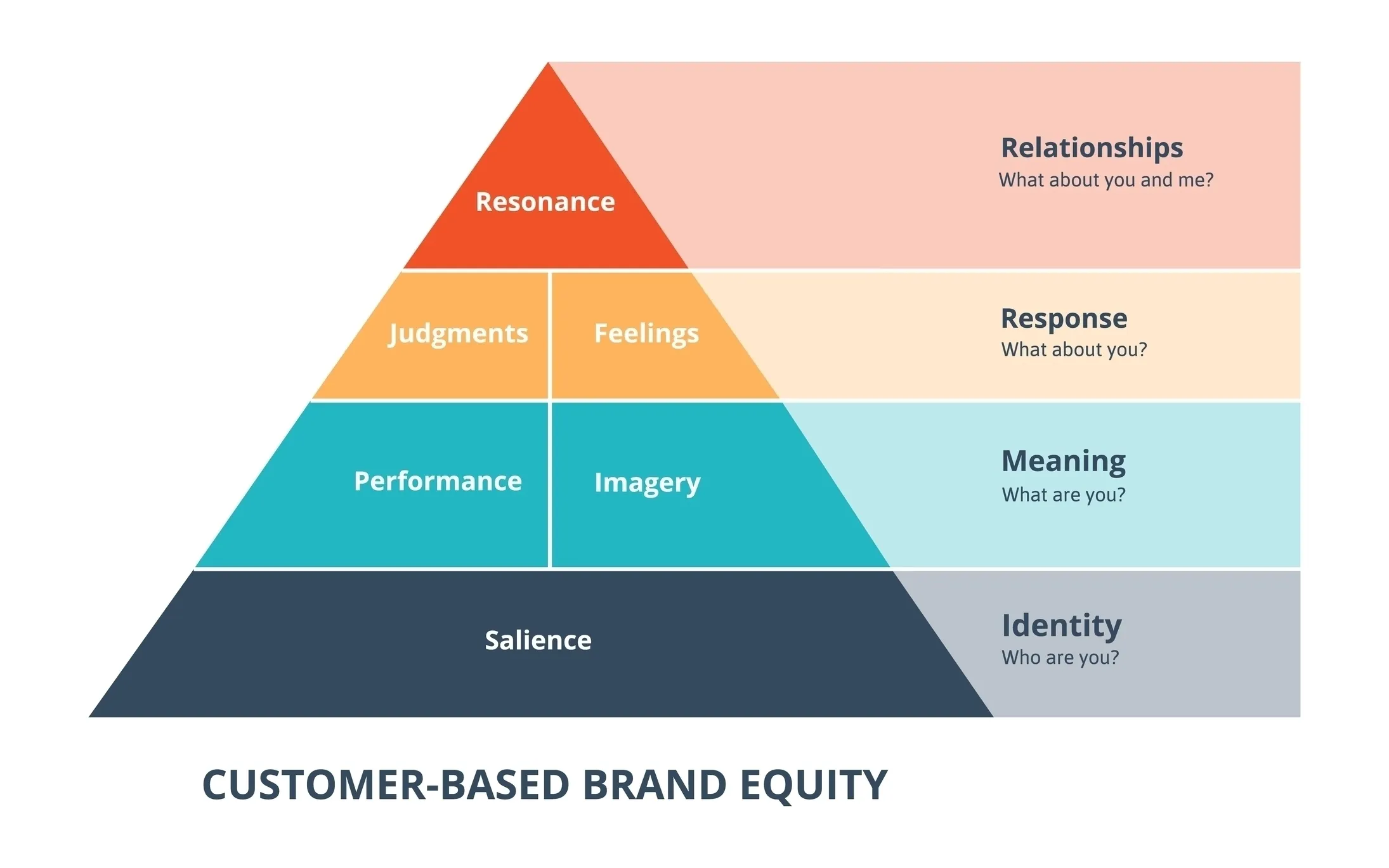Brands serve two purposes
In marketing, brands serve two different purposes: a functional purpose and a cultural purpose.

These are represented respectively by the left and right half of the Customer-Based Brand Equity (CBBE) model developed by Kevin Lane Keller and presented in The New Strategic Brand Management.
Functional purpose
On the functional side, brands help consumers make choices in an environment of high information asymmetry and limited rationality.
When I’m buying a new car, it is impossible—because of a lack of time, computational power, and information—for me as a consumer to rationally evaluate all the products that are compatible with my needs and then pick the absolute best option. Instead, I use brands as a shortcut to make my decision: if I’m looking for safety, I will go for Volvo; if I’m looking for performance, I will go for BMW; if I’m looking for elegance, I will go for a Mercedes.
The exact brands are not important here and will vary depending on time, market, and consumer attitudes; what matters is that I have associated (through memorable and consistent advertising) certain brands with certain traits, and reach for those brands directly when I need to make a purchase decision.
Cultural purpose
On the cultural side, brands help consumers signal certain aspects of their identity to themselves and the outside world.
When I buy a BMW, my choice is not merely a functional one (i.e., I want a fast car). Instead, I buy a BMW because I also want to reinforce (both to myself and others) that I’m successful, active, and fearless. This aspect of brands only works if the brand has the same meaning to everyone (or to a significant percentage of the segment I’m looking to reach with my purchase decision), which is why advertising must be consistent.
For some, this kind of brand-mediated cultural expression can be considered art.
The functional-cultural spectrum
It’s important to note that not all brands serve both a functional and cultural purpose, or at least not in equal parts. Depending on their category, market, and marketing strategy, different brands will fall on different points of the functional vs. cultural spectrum.
While functional brands typically invest heavily in spec-driven product development and communication, cultural brands typically invest heavily in vibe-driven product development and communication. Furthermore, cultural brands are bidirectional and promote remixing to stay relevant with their audience.